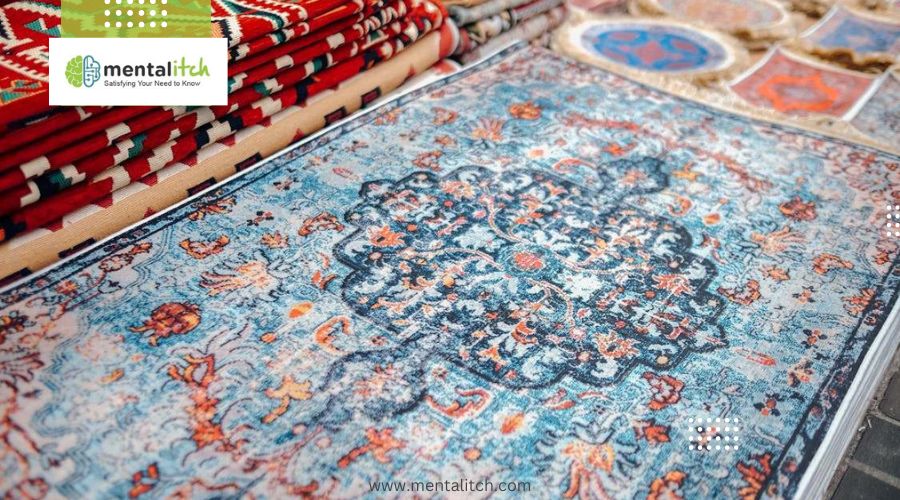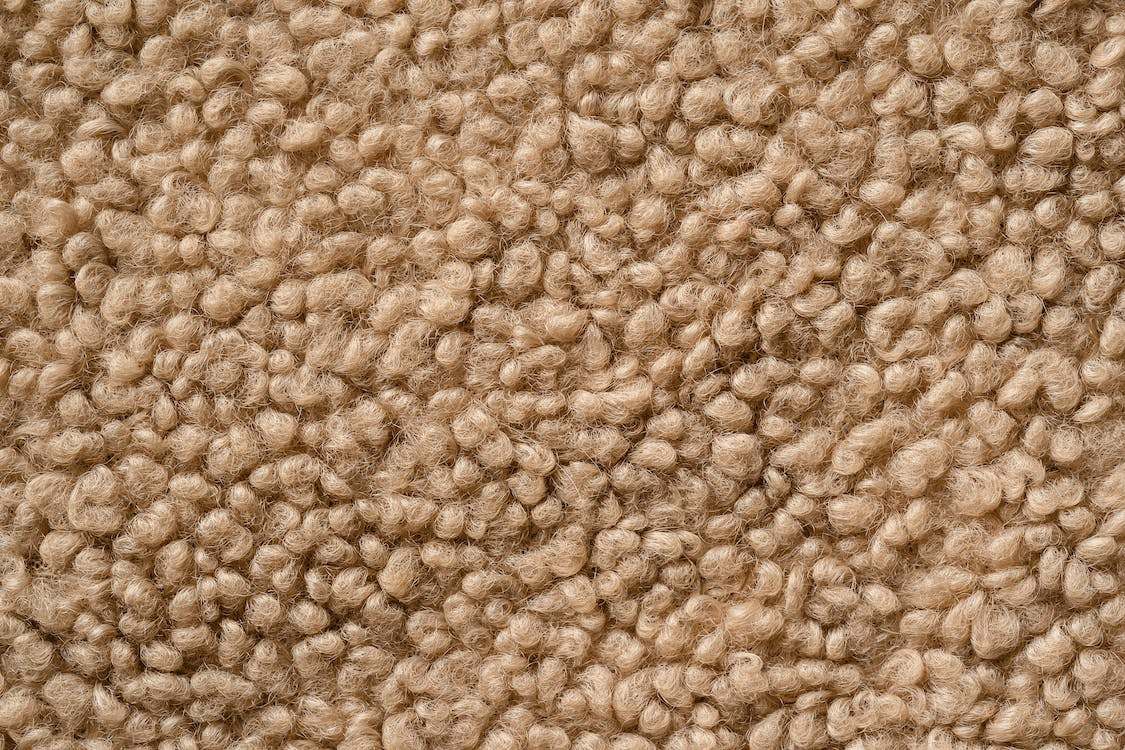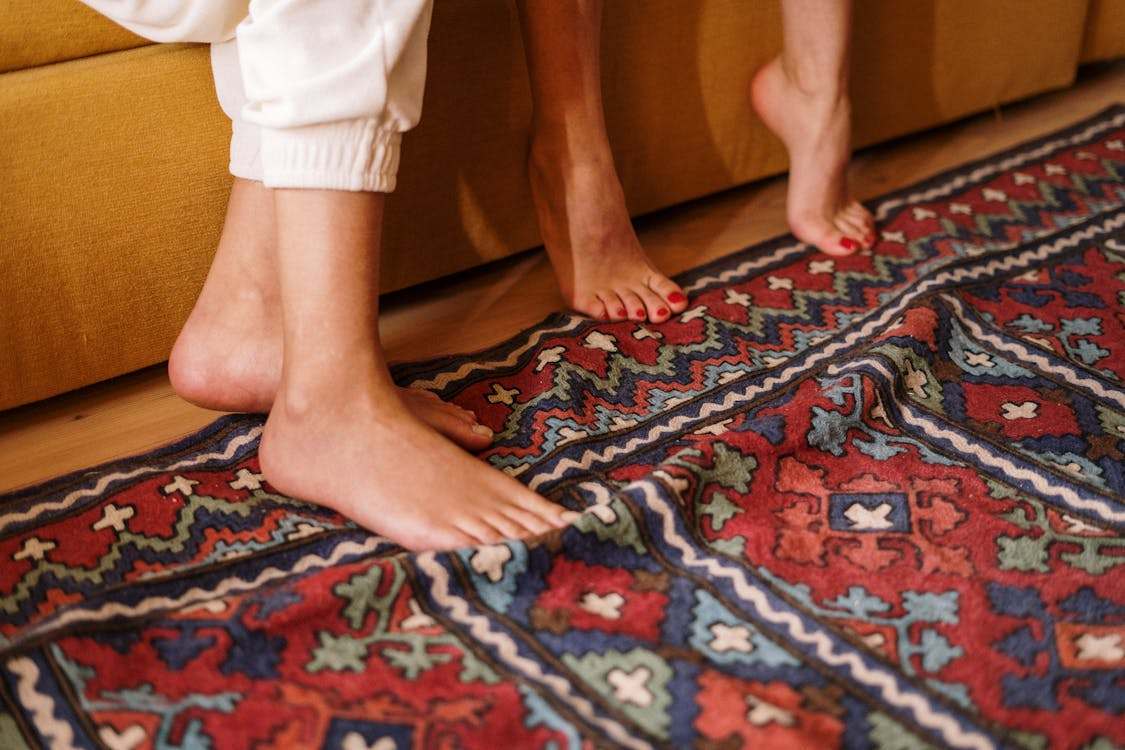Carpets and rugs are two of the most popular choices when it comes to adding warmth, texture, and color to a room. While they both serve similar purposes in enhancing the comfort and aesthetic appeal of living spaces, there are distinct differences between the two that can influence a homeowner’s decision. This article aims to provide information on carpets and rugs, highlighting their similarities and differences so that you will have a better idea of which one is suitable for your home.
What are Carpets?
Carpets are a popular flooring option that covers entire rooms, offering a seamless and cozy underfoot experience. They are typically made from woven fibers – wool, nylon, polyester, or a blend – and are installed over a padded underlay, providing additional comfort and insulation. Carpets are favored for their ability to add warmth to a space, both visually and physically, making them an ideal choice for bedrooms, living rooms, and areas where comfort is paramount.
One of the main advantages of carpets is their sound-dampening qualities. They can significantly reduce noise levels, making them perfect for multi-story homes where foot traffic might be a concern. Additionally, carpets come in a vast array of colors, patterns, and textures, allowing for complete customization to match any decor style. They can hide imperfections in the subflooring and create a unified look that can make rooms appear larger and more cohesive.
However, carpets require regular maintenance to keep them looking their best. Vacuuming is necessary to remove dirt and allergens, and periodic professional cleaning is recommended to address deeper stains and wear. Carpets are also prone to retaining odors and can be a challenge to keep clean in homes with pets or small children. Despite these considerations, many homeowners appreciate the comfort, aesthetic appeal, and overall ambiance that carpets bring to their living spaces.
What are Rugs?
Rugs are versatile floor coverings that come in various sizes, shapes, colors, and patterns, offering both functionality and style to any room. Unlike carpets, which are typically installed wall-to-wall and affixed to the floor, rugs are movable and can be placed on top of any type of flooring to add warmth, texture, and visual interest. Rugs serve many purposes; they can define spaces within a room, protect underlying floors, provide comfort underfoot, and act as a focal point in interior design.
One of the key benefits of rugs is their flexibility in terms of design and placement. Available in an array of materials, including wool, cotton, synthetic fibers, and natural materials like jute and sisal, rugs can suit any decor style, from traditional to contemporary. They can easily be switched out to refresh a room’s look or to accommodate seasonal changes. Additionally, rugs offer an effective solution for noise reduction, helping to absorb sound and create a quieter, more serene living environment.
The Similarities and Differences
Carpets and rugs are fundamental elements in the realm of home decor, both offering a sense of comfort and style to living spaces. Despite their common purpose of enhancing the aesthetic and functional aspects of a room, they possess distinct characteristics that set them apart. Here, we’ll explore the similarities and differences between carpets and rugs to help you understand which option might be the best fit for your home.
Similarities
Carpets and rugs are two flooring options that share a range of similarities that make them essential components in the design and functionality of our living spaces. Here are some of the key similarities between carpets and rugs:
- Aesthetic Enhancement: Both carpets and rugs play a crucial role in interior decoration. They come in various colors, patterns, and textures, allowing homeowners to express their personal style and enhance the overall aesthetic of a room.
- Comfort: Carpets and rugs provide a soft, plush surface underfoot, offering comfort and warmth. This is particularly appreciated in colder climates or during cooler months, where they contribute to a cozy atmosphere.
- Sound Absorption: The materials used in both carpets and rugs are effective in absorbing sound, reducing echo, and minimizing noise levels within a space. This makes them a popular choice in apartments, bedrooms, and other areas where noise reduction is desired.
- Insulation: Apart from offering physical warmth, carpets and rugs also act as insulators. They help retain heat in a room, contributing to energy efficiency and reduced heating costs.
- Safety: By providing a non-slip surface, carpets, and rugs can reduce the likelihood of slips and falls. They also offer a cushioned landing, which is particularly beneficial in homes with young children or elderly residents.
- Air Quality: Both can trap dust, allergens, and other particulates within their fibers, potentially improving indoor air quality. Regular cleaning, however, is essential to maintain this benefit and ensure the health of the home environment.
- Versatility: Whether you’re looking to cover a large area with wall-to-wall carpeting or define a specific section of a room with a rug, both options offer the versatility to meet various design and functional needs within a home.
Differences
Carpets and rugs, while similar in their purpose of floor covering, exhibit distinct differences that cater to various preferences and requirements in home decor. Here are the key distinctions between carpets and rugs:
- Installation: Carpets are usually installed wall-to-wall and are fixed to the floor, creating a seamless look across the room. Rugs, however, are loose and can be laid on top of any flooring type, offering flexibility in placement and easy removal for cleaning or changing decor.
- Size and Coverage: Carpets typically cover the entire floor of a room, providing uniformity and insulation. Rugs come in various sizes, allowing them to define areas within a room, such as seating areas, without covering the entire floor.
- Portability: Due to their installation method, carpets are not meant to be moved once installed. Rugs can easily be picked up, moved, and even swapped between rooms, offering versatility in home styling.
- Maintenance and Cleaning: Carpets may require professional cleaning due to their size and the complexity of removal. Rugs are generally easier to clean; many can be taken outdoors for a thorough wash or to professional cleaners without much hassle.
- Cost and Installation: Installing carpeting can be more expensive and labor-intensive, often requiring professional help. Rugs can be a more cost-effective solution, with the added benefit of no installation costs and the ability to change them as desired.
- Design and Style Flexibility: While carpets offer a range of colors and textures, rugs are available in a wider variety of styles, patterns, and materials. This makes rugs a popular choice for those looking to add a statement piece to their decor.
- Lifespan and Durability: The fixed nature of carpeting means it’s subjected to consistent wear across the entire surface, which can lead to quicker wear in high-traffic areas. Rugs can be rotated or moved to ensure even wear, potentially extending their lifespan.
Conclusion
Carpets offer a more permanent solution with wall-to-wall coverage, contributing to a cohesive look throughout a room. Rugs, on the other hand, provide versatility and ease of change, allowing for creative expression and practical benefits such as easy cleaning and portability. Ultimately, the choice between carpets and rugs depends on individual lifestyles, design goals, and the specific requirements of each space.
Additional Suggestions
- Outdoor rugs are great to have if you want to elevate the look of your patio or front yard.
- You can buy high-quality area rugs here.
- Check out The Rug District for high-quality outdoor rugs.
- You can choose a round rug that can add a contemporary look to your space.
- Check out these luxury bedroom ideas to know how to apply rugs to your room.
- For carpet cleaning, there are three methods professional carpet cleaners use to clean area rugs: dry cleaning, steam cleaning, and hand washing.
- Zeigler Rugs offers some of the best rugs for homes.
- Pakistani Rugs can be used for smaller areas in your home.
- Visit RugKnots to buy the desired material wool rugs and elevate your home’s interior.
- There are a variety of styles and colors for runner rugs, so you can find one that fits your home’s décor perfectly.
- An oversized rug for the kitchen would solve many kitchen problems, including appearance and cleanliness.
- There are localized cleaning options for home items, and one can be easily acquired from OrientalRugCleaningOrlando.com.
- According to Garden Hose, you can use the garden hose to clean your oriental rugs.
- Talk with the professional rug cleaners before using any chemicals for cleaning your carpet.
- Handmade Rugs are also great choices if you want something unique for various spaces of your home.
- You can easily buy Large Area Rugs for the living room. These rugs will be able to provide cover for your flooring.
- You can click the following link and check out a wide array of high-quality large area rugs SF.
- Hiring an oriental rug cleaning near me is essential if you want to extend the lifespan of your rugs.
- Professional rug cleaners ensure they take proper precautions of how to prepare the rug for cleaning.
- If you find that your rug is holding onto dirt and odors from pets, then you might have the professional use another type of treatment to get rid of odors that are embedded into the rug.
- For more information on rug cleaning, visit http://middletowncarpetcleaningct.com/.
- Cleaning an area rug usually ranges from $0.38 to $0.47 per square foot.
- Indoor carpets are mainly used for aesthetic purposes in a home.
- Hire Zerorez Carpet Cleaning Houston if you want to get one of the best carpet cleaning services in Houston.
- Besides rugs and carpets, you have the option of using fresh flower petals or fake flowers to improve the look of different areas of your room. You can also use gold centerpiece stands as aisle runners.
- Professional carpet cleaning solutions work great if you want to save time and effort in cleaning carpets.
- You may need a Carpet Extractor to effectively clean carpets.
- If you want to know more about different types of cleaning tricks for carpets, Visit the Cleaning Machine Review Website.
- Carpet shops Colchester offer various carpet patterns, colors, and styles.
- LT Flooring can guide you through various carpeting or flooring options to settle on the best one.
National Rug Cleaners, a carpet cleaning service in Haddonfield, recommends vacuuming at least once a week to remove dirt, dust, and allergens.




